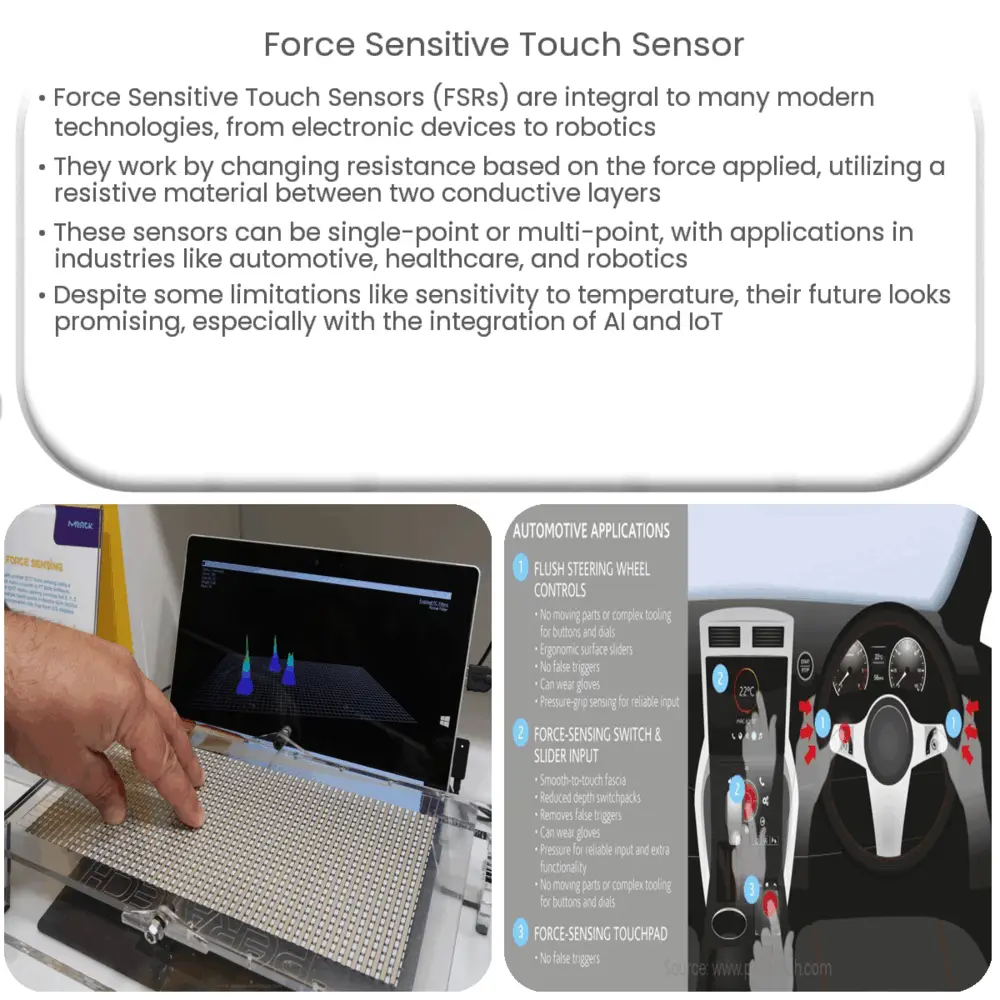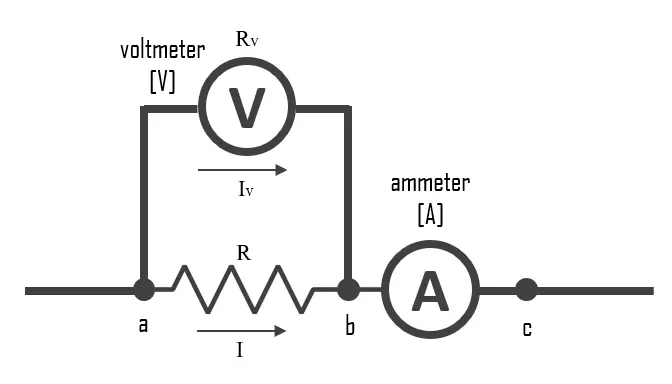Explore the world of Force Sensitive Touch Sensors: their working principle, types, applications, and future prospects.

Introduction to Force Sensitive Touch Sensors
Force Sensitive Touch Sensors, also known as Force Sensitive Resistors (FSRs), have emerged as a crucial component in many contemporary technologies. Ranging from electronic devices, robotics, to interactive user interfaces, these sensors have integrated themselves seamlessly into our daily lives.
Working Principle of Force Sensitive Touch Sensors
The underlying principle behind Force Sensitive Touch Sensors is essentially a change in resistance that corresponds to the force applied to it. These sensors contain a resistive material sandwiched between two conductive layers. When a force is applied to the sensor’s surface, it causes a deformation in the resistive material. This deformation leads to a change in the distance between the conductive layers, thus altering the sensor’s overall resistance.
Key Components
- Force Sensitive Resistor (FSR): This is the main sensing element that responds to the force applied. It is composed of a resistive material sandwiched between two conductive layers.
- Electronics: This part processes the changes in resistance and converts it into a form that can be understood by other devices or systems.
- Interface: This includes elements that facilitate user interaction with the sensor, such as a screen or a button.
Types of Force Sensitive Touch Sensors
Force Sensitive Touch Sensors can be broadly classified into two types based on their sensing capabilities: Single-point sensors and Multi-point sensors.
- Single-point sensors: These sensors can detect and measure the force applied at a single point. They are commonly used in applications that require simple interaction, such as push buttons.
- Multi-point sensors: These sensors can detect and measure the force applied at multiple points simultaneously. This type of sensor is used in more complex applications, such as touch screens on mobile devices or tablets.
Applications of Force Sensitive Touch Sensors
Force Sensitive Touch Sensors have diverse applications due to their versatility and adaptability. They are used in a variety of industries, including electronics, automotive, robotics, and healthcare. The following are some specific examples of their usage:
- Automotive industry: These sensors are used for intuitive control interfaces, such as touch-sensitive steering wheels and control panels.
- Healthcare: In medical devices, these sensors are used for pressure monitoring systems and prosthetic devices.
- Robotics: They are used to enable robots to interact with their environment more effectively.
Advantages and Limitations
Force Sensitive Touch Sensors come with several advantages. They are simple, low-cost, and easy to integrate into various systems. They offer high sensitivity and a wide range of force detection, making them versatile for different applications. However, they also have some limitations. The readings can vary with temperature and aging. Moreover, they are not extremely precise, which can limit their use in applications that require high precision.
Future Prospects
The future of Force Sensitive Touch Sensors looks promising. With advancements in material science and electronics, these sensors are expected to become more reliable, accurate, and versatile. There are predictions of incorporating AI and machine learning techniques to improve the sensitivity and accuracy of these sensors. Furthermore, as the Internet of Things (IoT) continues to expand, the demand for such sensors is projected to increase significantly.
- AI and Machine Learning: This technology can be used to predict the behavior of these sensors under various conditions, improving their reliability and accuracy.
- IoT: As more and more devices become interconnected, the need for intuitive and responsive interfaces will grow, increasing the demand for Force Sensitive Touch Sensors.
Conclusion
Force Sensitive Touch Sensors play a pivotal role in our digital age, enabling interaction with a myriad of devices in an intuitive and natural manner. Despite some limitations, the benefits they offer far outweigh the challenges. As research and technological advancements continue, these sensors are expected to become even more integrated into our lives, providing a seamless and immersive user experience.
From the single tap of a button to the multifaceted touch screen interaction, the impact of Force Sensitive Touch Sensors is significant. Looking forward, with the anticipated integration of AI and IoT, these sensors are poised to redefine how we interact with technology, making it more accessible, intuitive, and engaging than ever before.



